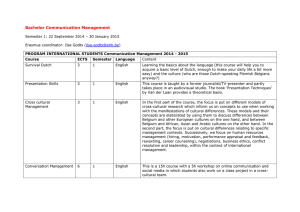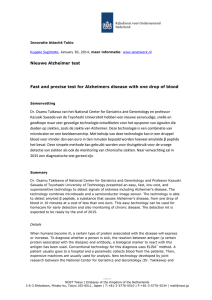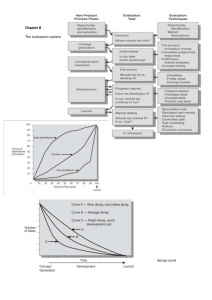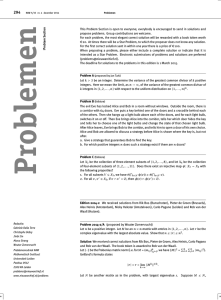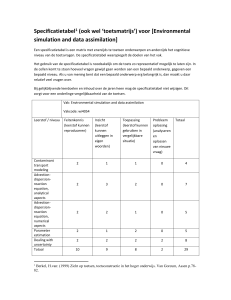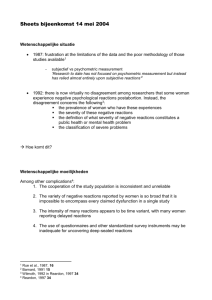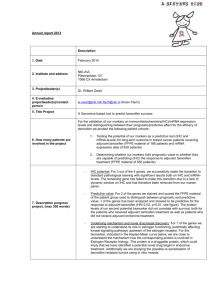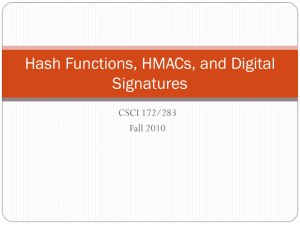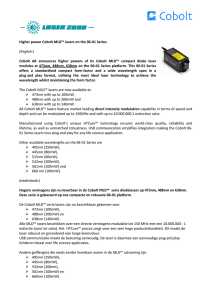Problemen
advertisement
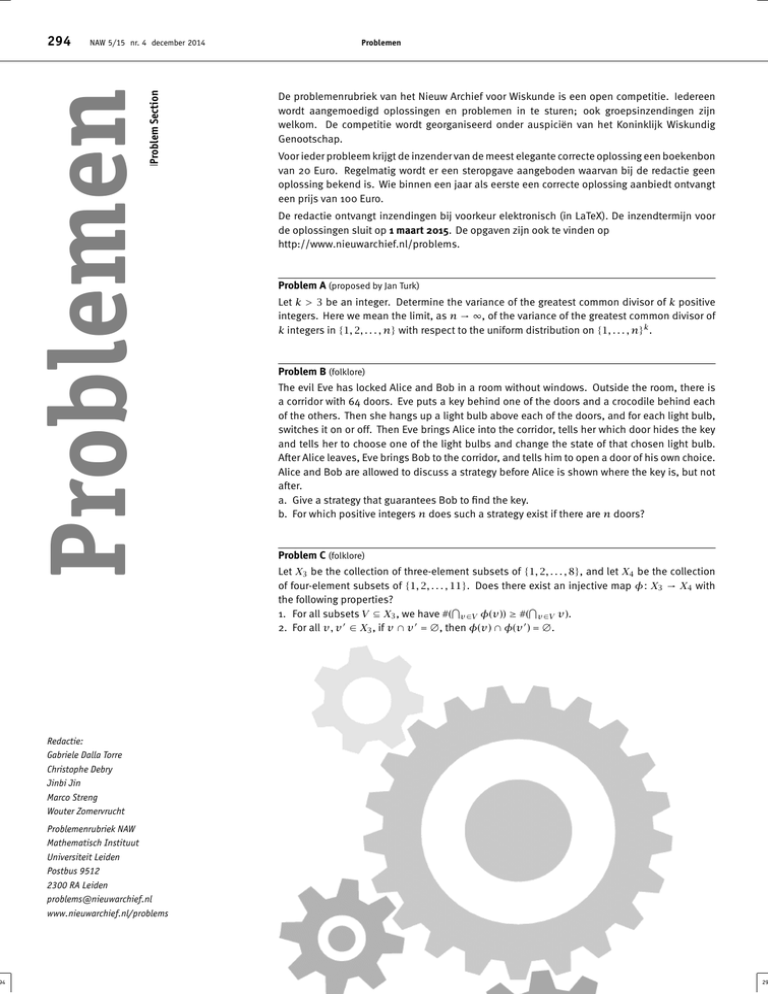
94
Problem Section
NAW 5/15 nr. 4 december 2014
Problemen
294
Problemen
De problemenrubriek van het Nieuw Archief voor Wiskunde is een open competitie. Iedereen
wordt aangemoedigd oplossingen en problemen in te sturen; ook groepsinzendingen zijn
welkom. De competitie wordt georganiseerd onder auspici¨en van het Koninklijk Wiskundig
Genootschap.
Voor ieder probleem krijgt de inzender van de meest elegante correcte oplossing een boekenbon
van 20 Euro. Regelmatig wordt er een steropgave aangeboden waarvan bij de redactie geen
oplossing bekend is. Wie binnen een jaar als eerste een correcte oplossing aanbiedt ontvangt
een prijs van 100 Euro.
De redactie ontvangt inzendingen bij voorkeur elektronisch (in LaTeX). De inzendtermijn voor
de oplossingen sluit op 1 maart 2015. De opgaven zijn ook te vinden op
http://www.nieuwarchief.nl/problems.
Problem A (proposed by Jan Turk)
Let k > 3 be an integer. Determine the variance of the greatest common divisor of k positive
integers. Here we mean the limit, as n → ∞, of the variance of the greatest common divisor of
k integers in {1, 2, . . . , n} with respect to the uniform distribution on {1, . . . , n}k .
Problem B (folklore)
The evil Eve has locked Alice and Bob in a room without windows. Outside the room, there is
a corridor with 64 doors. Eve puts a key behind one of the doors and a crocodile behind each
of the others. Then she hangs up a light bulb above each of the doors, and for each light bulb,
switches it on or off. Then Eve brings Alice into the corridor, tells her which door hides the key
and tells her to choose one of the light bulbs and change the state of that chosen light bulb.
After Alice leaves, Eve brings Bob to the corridor, and tells him to open a door of his own choice.
Alice and Bob are allowed to discuss a strategy before Alice is shown where the key is, but not
after.
a. Give a strategy that guarantees Bob to find the key.
b. For which positive integers n does such a strategy exist if there are n doors?
Problem C (folklore)
Let X3 be the collection of three-element subsets of {1, 2, . . . , 8}, and let X4 be the collection
of four-element subsets of {1, 2, . . . , 11}. Does there exist an injective map φ : X3 → X4 with
the following properties?
T
T
1. For all subsets V ⊆ X3 , we have #( v∈V φ(v)) ≥ #( v∈V v).
2. For all v, v 0 ∈ X3 , if v ∩ v 0 = ∅, then φ(v) ∩ φ(v 0 ) = ∅.
Redactie:
Gabriele Dalla Torre
Christophe Debry
Jinbi Jin
Marco Streng
Wouter Zomervrucht
Problemenrubriek NAW
Mathematisch Instituut
Universiteit Leiden
Postbus 9512
2300 RA Leiden
problems@nieuwarchief.nl
www.nieuwarchief.nl/problems
29
